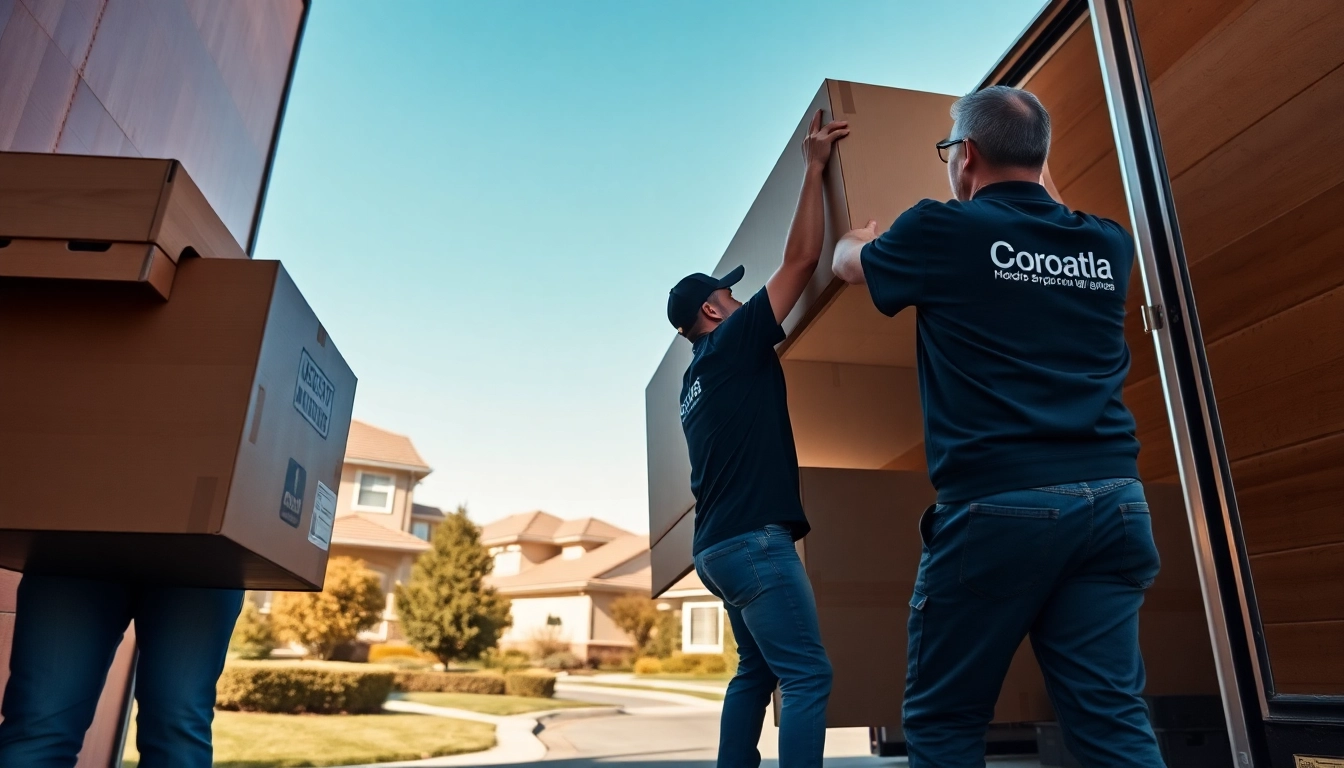1. Introduction to Electrical Service
Electrical service forms the backbone of modern living and operates seamlessly to provide energy that powers our homes, workplaces, and more. Understanding Electrical Service entails recognizing its components, importance, and the different facets of its provision. With the increasing complexity of electrical systems, the need for skilled professionals to manage these services has never been greater.
1.1 What is Electrical Service?
Electrical service refers to the supply, installation, and maintenance of electrical systems that provide power to buildings. This encompasses everything from the main power lines that bring electricity to your premises, to the wiring within your home, and all the fixtures, appliances, and outlets that rely on that power. The electrical service includes the service entrance, service panel, and the circuit system that ensures safe distribution through your home or business.
1.2 Importance of Professional Electrical Services
The provision of electrical services is not just about connecting wires; it involves ensuring safety, efficiency, and compliance with local codes and regulations. Professional electricians are trained to diagnose issues, perform installations safely, and implement energy-efficient solutions. This expertise helps prevent electrical fires, power outages, and costly repairs resulting from faulty wiring or installations. Additionally, electrical systems that are not properly maintained may lead to increased energy consumption, reflecting poorly on both environmental efforts and monthly utility bills.
1.3 Common Electrical Service Components
Key components of electrical service include:
- Service Entrance: The point where electrical power is brought into a building, including service drops or underground feeds.
- Service Panel: Also known as a breaker box, this is where power is distributed to various circuits in the building.
- Circuit Breakers/Fuses: Devices that provide overcurrent protection and safety for the wiring systems and connected devices.
- Wiring: Conductors that carry electrical current to outlets, lights, and appliances.
- Outlets and Switches: Points of access for electrical devices and controls for light and other systems.
2. Types of Electrical Services Offered
Different needs dictate the type of electrical service required. Below we explore the primary categories of electrical services.
2.1 Residential Electrical Service
Residential electrical services cover a broad spectrum of needs in homes, from wiring a new build to upgrading outdated systems. Services include:
- New Home Wiring: Complete installation of wiring and electrical panels.
- Lighting Installation: Setting up indoor and outdoor lighting fixtures to enhance aesthetics and safety.
- Electrical Outlets Upgrade: Adding or replacing outlets to accommodate modern electricity demands.
- Energy-Efficient Solutions: Installation of energy-efficient appliances and systems, reducing overall power consumption.
2.2 Commercial Electrical Service
Commercial premises often require more specialized electrical services due to their complexity and the volume of power used. Key services include:
- Commercial Lighting: Installing energy-efficient lighting solutions tailored to the needs of business environments, ensuring compliance with regulation.
- Data and Network Cabling: Establishing infrastructure that supports communication and technology in commercial settings.
- Emergency Power Solutions: Backup systems like generators to ensure business continuity.
- Maintenance Programs: Regular inspections and services to adhere to safety standards and minimize downtime.
2.3 Emergency Electrical Service
Electrical emergencies can occur unexpectedly, leading to significant safety risks and operational downtime. Emergency electrical services can address issues like:
- Power Outages: Rapid response services to restore power during outages.
- Electrical Fires: Urgent assistance with systems affected by fire hazards.
- Hazardous Conditions: Addressing live wires, electrical shocks, and other dangerous situations to mitigate risk.
3. Choosing the Right Electrical Service Provider
With the prevalence of electrical needs, selecting a qualified service provider is crucial. Here is how to navigate the selection process effectively.
3.1 Qualifications to Look For
When evaluating potential electrical service providers, consider the following qualifications:
- Licensing: Ensure that the electrician or company possesses the necessary licenses and certifications required by local and state regulations.
- Insurance: Confirmation of liability insurance cover protects you from financial liability in case of accidents during the service.
- Experience: A proven record of experience in handling the type of electrical work you require can be a significant asset.
- References and Reviews: Check reviews or ask for references to gauge the quality and reliability of the provider’s past work.
3.2 Questions to Ask Potential Providers
When assessing different electrical service providers, ask questions that reveal their expertise and approach to business:
- What types of projects have you previously completed?
- Can you provide a detailed estimate, including materials and labor costs?
- What safety protocols do you follow during installations or repairs?
- How do you handle unforeseen issues during a project?
3.3 Comparing Costs and Services
When selecting an electrical service provider, it’s essential to compare costs while also considering the scope of services provided. Low-cost options may come with compromises in safety, quality, or reliability. Obtain written estimates from multiple providers detailing the services included, and assess them against industry standards and safety regulations.
4. Electrical Service Installation Process
The installation of electrical services must follow a structured process to ensure safety, regulatory compliance, and efficiency. Here’s a deeper look into each phase.
4.1 Initial Assessment and Planning
The first step in the electrical service installation process is an initial assessment of the site. An electrician evaluates existing systems and determines the best approach for installation or upgrades. The planning phase includes:
- Identifying the needs of the building, including power requirements, safety considerations, and layout planning.
- Creating a detailed blueprint to showcase where wiring, outlets, and fixtures will be installed.
- Determining equipment and material needs for the project.
4.2 Code Compliance and Permits
Electrical installations must comply with local electrical codes and regulations. The electrician facilitates this by:
- Applying for necessary permits before commencing work, ensuring that all changes are approved by local authorities.
- Following the National Electrical Code (NEC) guidelines to guarantee safety and reliability.
- Documenting all checks and inspections required to pass final approval by relevant inspection agencies.
4.3 Professional Installation Best Practices
Professional installation practices ensure that the entire electrical system is secure, efficient, and operationally sound. Best practices include:
- Using high-quality materials that meet or exceed industry standards.
- Implementing thorough testing of circuits and safety systems after installation to confirm compliance and function.
- Ensuring proper grounding and shielding to minimize electrical risks.
5. Maintenance and Safety Tips for Electrical Services
Post-installation care is essential to ensure the longevity and safety of any electrical system. Here are direct recommendations for maintenance and electrical safety.
5.1 Routine Maintenance Guidelines
Regular maintenance is vital to prolonging the life of your electrical system and preventing costly failures. Steps include:
- Conducting regular inspections: Periodically check circuits, outlets, and panels for wear or damage.
- Scheduling professional evaluations: Get qualified electricians to assess the system annually to identify any potential issues.
- Cleaning fixtures: Keep light fixtures and outlets clear of dust and debris to prevent overheating.
5.2 Recognizing Signs of Electrical Issues
Being vigilant about potential electrical problems can prevent serious accidents. Common signs include:
- Frequent tripping of circuits: This can indicate overloaded circuits or faulty electrical systems.
- Flickering lights: Often a sign of loose wiring or issues in the electrical supply.
- Unusual sounds: Buzzing or crackling noises can indicate loose connections.
- Burning smells: A definite cause for concern that may indicate overheating wiring.
5.3 Best Practices for Electrical Safety
Electrical safety is a priority in any setting. Here are best practices to follow:
- Use appliance cords and extension cords only as recommended, avoiding overloading.
- Install ground fault circuit interrupters (GFCIs) in high-risk areas such as kitchens and bathrooms.
- Avoid using electrical appliances in wet conditions, and ensure that outlets are dry before use.
- Educate all inhabitants about the correct use of electrical systems and potential hazards.



